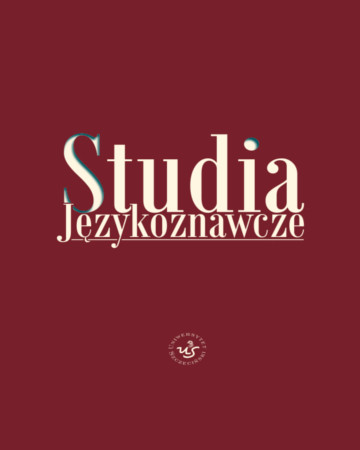Abstrakt
The author examines the full set of vocabulary from the fi elds of green colour,
representing the entire corpus of works by Stefan Żeromski – great Polish writer (1864
–1925), who in his work has an incredible richness and diversity of Polish vocabulary.
It became the subject of special research in an innovative writer dictionary, published
in the 15-volume series called Słownictwo pism Stefana Żeromskiego (“Vocabulary
of Stefan Żeromski writings”) (Kraków 2002, 2007, 2010). No. 5 Świat barw (“The world
of colours”) by Kwiryna Handke contains full vocabulary of colour, also from the fi elds
of green. In this article, the author cited only a part of it for illustration of issues that have
dealt with. Field of green colour in Stefan Żeromski works consists of 7 tokens: angelica,
olive green, aquamarine, emerald, rust, tabac, green. Their presence has a considerable disproportion: 498 tokens to use the green to 29 use of all the other fi eld token. The
analysis and interpretation of the material focuses on the green colour. Żeromski used the
Polish language in all known forms of formative slot: green, greenish, forms an adverb,
a variety of verbs and participles and many forms of compound adjectives, which are
made according to known patterns, but differentiating them for creative images – from
green token in various functions within these structures. All names and designation
of green, regardless of their formative forms are treated interchangeably by the writer as
a means of transmitting the colour images and realities of the surrounding world: the real
and the created. He used it for simple information transfer, or modify styles in a number
of expressions, phrases, metaphors, comparisons, personifi cations, animations, etc.
In her considerations the author has focused her attention on the share of green to
depict the world of fi ction presented by the writer, while stressing constantly explicit
reference to the colour of the real world. The study separates the prototype colour facts
– in this case belonging to the natural world, from the artefacts, which are the result of the
realities and experiences of people.
Stressing the meaning of the green colour value, she highlighted – in nature and
human life – on the one hand, associating them with beauty, joy and on the other hand
– the ugliness, misery, disease, dying.





